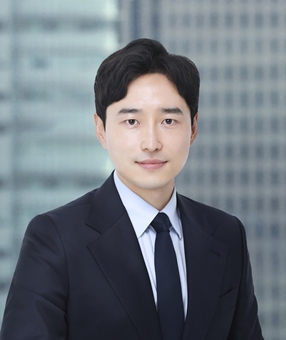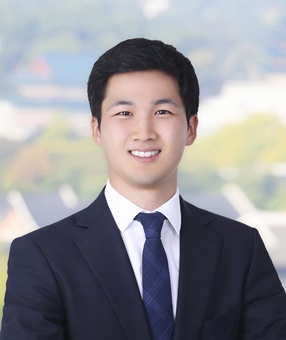The Singapore International Arbitration Centre (“SIAC”) has introduced the first major revision to its arbitration rules since 2016.
The newly amended 2025 SIAC Arbitration Rules (the “2025 Rules”) came into effect on January 1, 2025, and will apply to all SIAC arbitrations commenced on or after that date, unless the parties agree otherwise. Given SIAC’s standing as a leading arbitration institution in the Asia-Pacific region, and its popularity among Korean companies, it is anticipated that numerous international arbitration cases will proceed under the updated 2025 Rules. It is therefore crucial to pay attention to the key revisions and their implications, particularly as the 2025 Rules introduce several new procedures aimed at enhancing the efficiency and flexibility of the arbitration process.
The key highlights of the 2025 Rules include:
|
1.
|
Enhanced Emergency Arbitrator Procedures and Introduction of Protective Preliminary Orders
In SIAC arbitrations, parties requiring urgent interim relief before the formation of an arbitral tribunal can seek recourse through emergency arbitration. The 2025 Rules expand the timeframe to request emergency arbitration.
In particular, while the 2016 SIAC Arbitration Rules (the “2016 Rules”) allowed emergency arbitration requests only upon or after filing a notice of arbitration, the 2025 Rules now permit such requests prior to filing. However, in such cases, applicants must file a notice of arbitration within seven days of submitting the emergency arbitration application to SIAC. Failure to do so results in the application being deemed withdrawn.
Furthermore, the 2025 Rules introduce the ability to seek a “protective preliminary order.” This allows an applicant to request an order prohibiting actions that could undermine the purpose of urgent interim or conservatory measures, before the opposing party is notified of the emergency arbitration application. The emergency arbitrator must decide on the protective preliminary order application within 24 hours of appointment, and the applicant must deliver the application and order, along with all relevant case materials, to the other parties within 12 hours of receiving the preliminary order.
|
|
2.
|
Introduction of Coordinated Proceedings
The 2025 Rules introduce provisions for “coordinated proceedings,” which facilitate the efficient management of multiple arbitration cases that raise common legal or factual issues, provided that the same tribunal is constituted for these arbitrations.
The absence of explicit provisions for coordinated proceedings in the 2016 Rules meant that the consolidation of multiple arbitrations could only occur under stricter conditions, such as disputes arising from the same legal relationship or a series of transactions.
However, under the new coordinated proceedings framework, when two or more arbitrations involve the same arbitral tribunal and common legal or factual issues, the tribunal can, upon a party’s request, coordinate the proceedings in the following ways: (i) conduct the cases concurrently or sequentially, (ii) hear the arbitrations together and align procedural aspects, or (iii) suspend proceedings in one case pending a determination in another. Nonetheless, each arbitration under coordinated proceedings remains a separate proceeding with decisions and awards issued separately unless otherwise agreed by the parties.
|
|
3.
|
Introduction of Administrative Conference
The 2025 Rules introduce an “administrative conference,” conducted by the SIAC Registrar, to improve procedural efficiency. Previously, procedural and administrative matters were typically addressed by the arbitral tribunal after its constitution. The amendment allows the Registrar to convene administrative conferences prior to tribunal formation, addressing potential procedural or administrative issues in the early stages of arbitration.
|
|
4.
|
Promotion of Mediation and Other Amicable Dispute Resolution Methods
The 2025 Rules include provisions encouraging the use of mediation and other amicable dispute resolution methods. For instance, parties can express their views on mediation in their notice of arbitration or response. The tribunal is also empowered to discuss settlement possibilities through mediation at the first case management conference and to take necessary steps, including suspending the arbitration, to facilitate such processes.
|
|
5.
|
Introduction of Provisions Regarding Disclosure and Restrictions on Third-Party Funding
The 2025 Rules introduce specific provisions stipulating details regarding “third-party funding” (i.e., funding for arbitration proceedings, such as arbitration fees, by a third party that is not a party to the arbitration).
A party that receives third-party funding must disclose the existence of the third-party funding agreement, and the identity and contact details of the third-party funder. The tribunal has the authority to order the disclosure of such information, as well as the details on the third-party funder’s interest in the outcome of the proceedings.
Moreover, a party is prohibited from entering into a third-party funding agreement that could give rise to a conflict of interest with a member of the tribunal. In such cases, the tribunal may direct the party to withdraw from the third-party funding agreement.
|
|
6.
|
Other Key Amendments
The 2025 Rules also include amendments for efficient and effective proceedings in arbitration, such as (i) the introduction of a “streamlined procedure” for small claims, apart from the existing expedited procedure, and (ii) the establishment of more specific deadlines for the tribunal to submit draft awards to the Registrar (within 90 days of the last oral or written submission).
|
The procedural enhancements and new mechanisms introduced in the 2025 Rules are expected to enable more efficient and flexible dispute resolution in SIAC arbitrations. The improved emergency arbitrator process and the introduction of protective preliminary orders allow parties to obtain urgent interim relief before initiating arbitration and to secure orders preventing actions that could undermine the purpose of such relief, without prior notification to the other party. These measures are expected to enhance the practical effectiveness and benefit of the relief granted.
Furthermore, the introduction of coordinated proceedings mitigate the risk of conflicting decisions on common legal or factual issues, promoting the integrity and consistency of arbitral awards and enabling more efficient and flexible arbitration proceedings from both procedural and substantive perspectives. The SIAC Registrar’s ability to conduct administrative conferences prior to tribunal formation is expected to prevent delays and cost increases from procedural and administrative disputes in the early stages of arbitration.
Lastly, as a party is obligated to disclose information regarding third-party funding and the tribunal has the authority to not only order the disclosure of information regarding third-party funding, but also prevent third-party funding that may give rise to a conflict of interest, it is expected that these factors could promote transparency and fairness in utilizing third-party funding in arbitration proceedings.
Given these new procedural developments under the 2025 Rules, parties should carefully and strategically consider how to utilize these mechanisms and how to respond to their use by opposing parties in future SIAC arbitrations.
[Korean Version]








